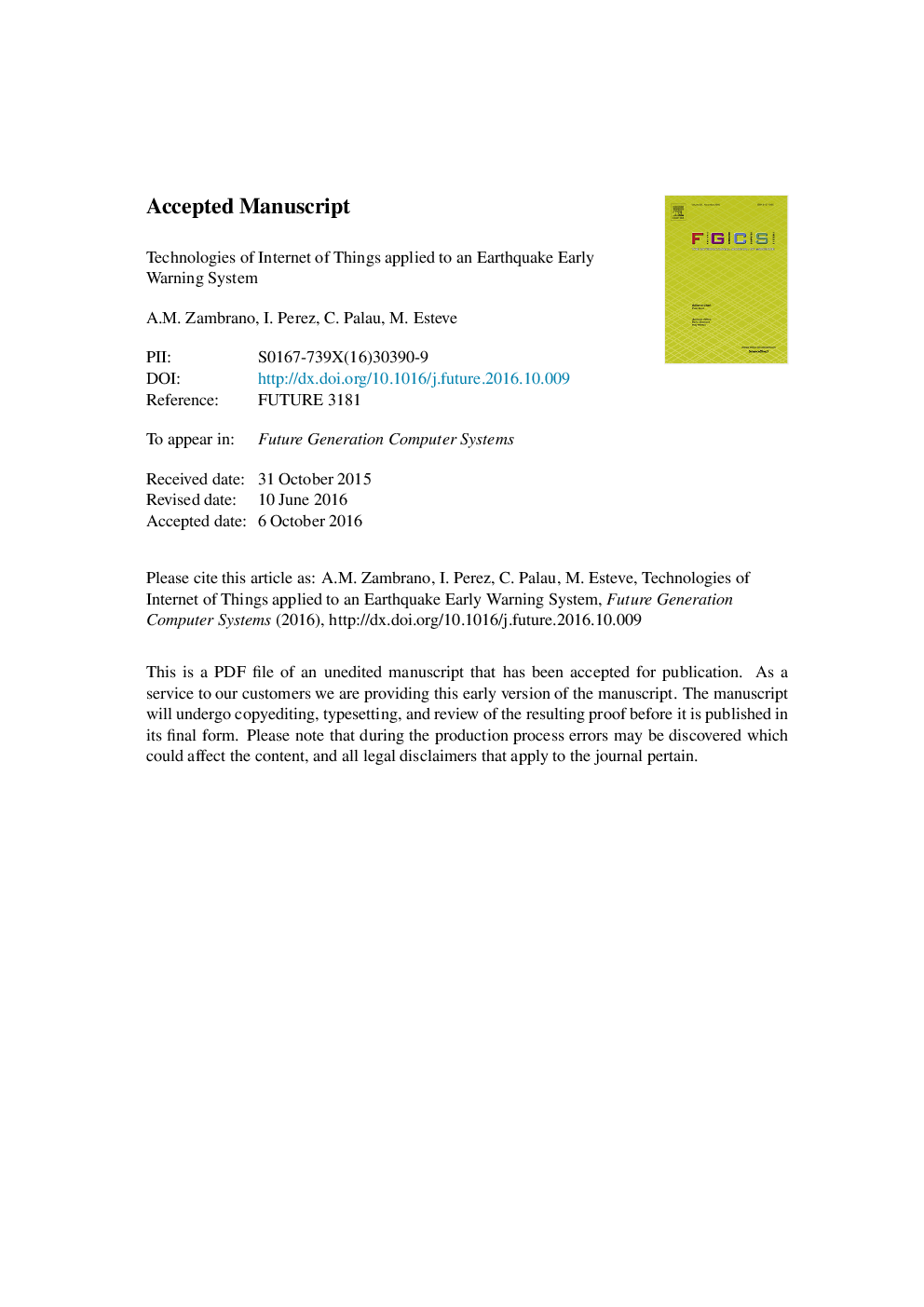| Article ID | Journal | Published Year | Pages | File Type |
|---|---|---|---|---|
| 4950413 | Future Generation Computer Systems | 2017 | 13 Pages |
Abstract
Internet of Things (IoT), more than smart homes and connected appliances, is to reach physical knowledge in real-time and remotely; and taking advantage of the smartphone's increasing diffusion, it is possible using its embedded sensors to monitor the environment, anytime and anywhere; this could be the solution to many community problems as well as natural hazards. This paper focuses on the solution to one of the most deadly natural hazards, earthquakes; taking seismic data of Ecuador, a country with an average of 6 earthquakes per day in 2013. Technologies of IoT like Sensor Web Enablement Framework (SWE) and Message Queue Telemetry Transport (MQTT) give the benefit of achieving an Early Warning System capable of anticipating up to 12 seconds the maximum seismic peak in the epicentre zone through smartphones. The system is supported by a wireless sensor network and its main components, requirements and design decisions are described. It considers time and spatial analyses, not present in any other work, making it more precise and customizable, and adapting it to the features of the geographical zone and resources. A preliminary evaluation of the solution was conducted to determine its strengths and weaknesses in terms of response time. The obtained results indicate that the energy consumption is as relevant for end-users as their personal security.
Keywords
Related Topics
Physical Sciences and Engineering
Computer Science
Computational Theory and Mathematics
Authors
A.M. Zambrano, I. Perez, C. Palau, M. Esteve,
